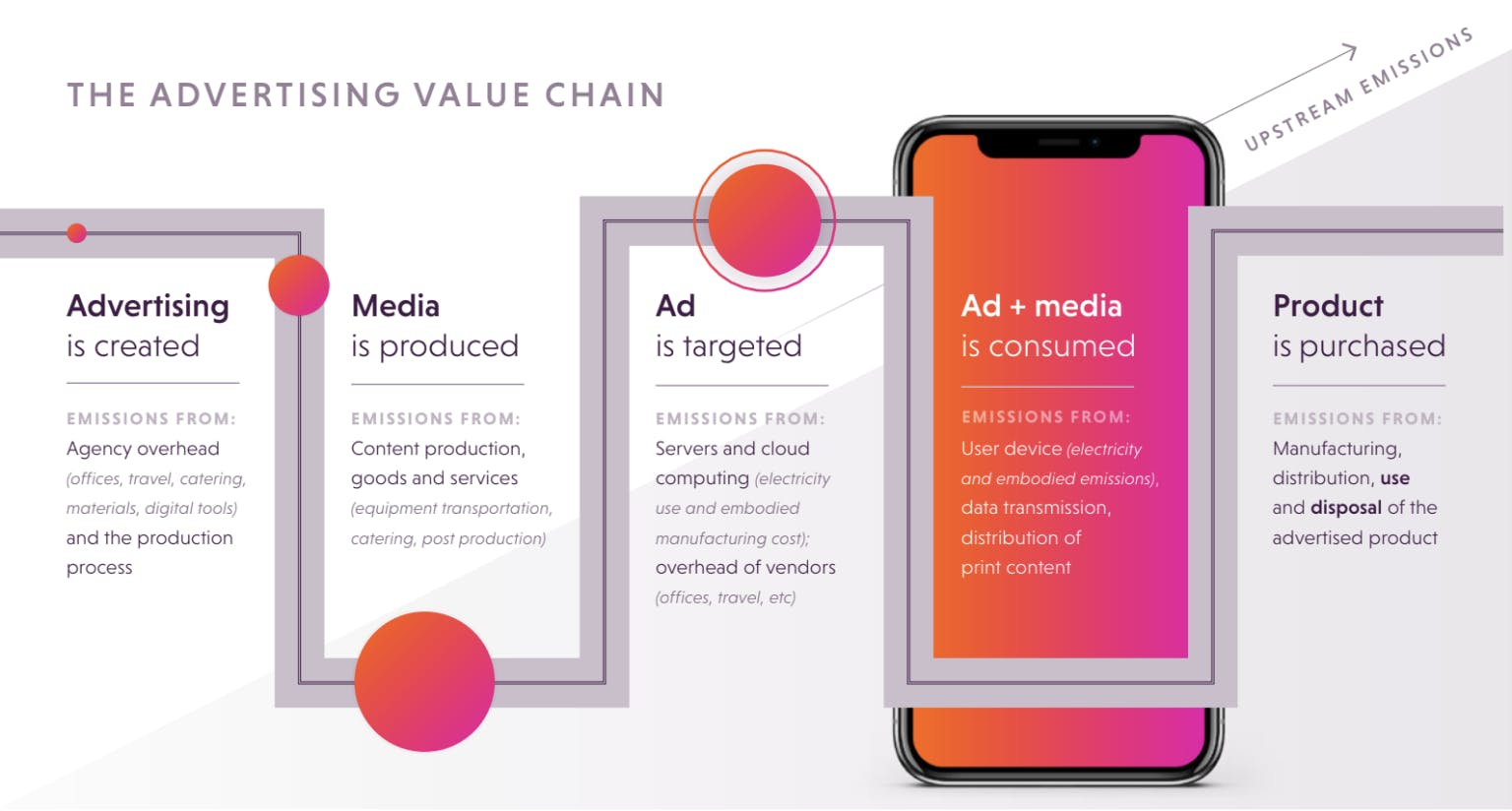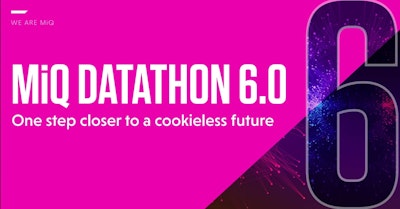
Digital ads generate a lot of emissions. A lot. If the internet was a country, it would be the third largest polluter in the world – after the US and China. We want to change that. In fact, 76% of advertisers agree that our industry should be doing more for decarbonizing the ad world. So why do marketers shy away from sustainable advertising?
First, this is very, very new data. Yes, marketers have been discussing sustainable advertising for years, but only recently have we seen this type of transparent emissions reporting applied to digital campaigns. As brands continue to scale adoption of emission reporting, we also expect to see an uptick in demand for sustainable ads.
But truth be told, we might be hesitating because of the potential trade-offs between business outcomes and helping the planet. PwC found this risk tolerance to hover around 1% for the majority of their survey respondents. This means that a large share of decision-makers will choose to help the planet only if it doesn’t impact the bottom line by more than 1%.
Luckily, reality isn’t this bleak.
Sustainable ad solutions exist, and they no longer have to trade campaign performance for environmental sustainability. By combining the right data, with innovations in tech and dynamic ad strategies, you can reduce your carbon footprint while still delivering highly effective campaigns. At MiQ we can deliver for you, your customers, and the planet all while supporting your Sustainability or ESG targets with ease – cool, right?
Let’s dig in.
How do digital ads contribute to emissions?
From the first brainstorming session to when the ad is viewed, emissions keep building up. This is because every online action requires energy to complete the task and that use of energy is what contributes to carbon and greenhouse gas emissions. Our digital ad world is constantly passing data, creatives, and measuring campaign effectiveness to ensure the right message is delivered to the right person. From the lense of the audience, ads and content are constantly being consumed, streamed, or downloaded onto an infinite number of screens. Then, it just keeps building.

The journey to sustainable advertising is complex. Carbon and greenhouse emissions are generated at each step of the advertising value chain. Even before the campaign can be launched, a significant amount of emissions are created during the initial brainstorming and media production. And it just keeps building.
The journey to sustainable advertising starts with measurement
Despite the growing interest in sustainable ads, measurement and activation is still quite complex. In order to understand the carbon footprint of a digital ad campaign, you have to score every single impression to identify trends and tactics to reduce emissions.
MiQ has plenty of this supply data (we have 22+ offices across 9 countries for our managed services), but we also know better than to grade our own homework. So we turned to our partner, Scope3, to help us apply a transparent methodology to score impressions using a blend of public and open source emissions data. By the time we saw the results we still needed some context to understand the story. Was it good? Or bad? What were similar brands or verticals seeing?
MiQ set off on a mission to build the first benchmarks for Sustainable advertising
To answer these questions, we ran a massive data and analytics project where we analyzed every impression across 360 campaigns with 566 feature combinations (so imagine a decision tree with the bottom row having 566 different outcomes).
What was the outcome? The first global programmatic benchmarks for sustainability! We actually wrote an entire ebook about it, so if you find this interesting, you can download it here and explore practical tips for planning sustainable campaigns.
HUGE because for the first time, we were able to tell you what ‘good’ looked like and what we can do to close the gap between what they are doing and what their vertical should be striving for. We were also able to stay partner agnostic in our approach meaning that we explored multiple DSPs, exchanges, and more – without bias that comes from the conflict of hosting such a platform. This gives brands a much more holistic view of their overall impact and supply opportunities.
We now offer a customized version of this report to all of our clients who want to run a sustainable ad campaign. MiQ’s Green Score is our proprietary KPI to help keep things simple for our clients. You can choose to track the detailed emissions reporting and/or you can holistically monitor everything in one Green Score index and track progress overtime.
Using your Green Score to build a more sustainable campaign
The way we use the Green Score Report is simple so that every advertiser can benefit from adding this to their campaigns risk-free, with no impact on performance. We use it to:
- Inform tactical day zero planning (before your campaign goes live);
- Adapt mid-flight media mixes; and
- Dynamically optimize to greener supply using the Green Score as a secondary KPI
Using your Green Score to build a more sustainable campaign
It’s time for all brands to lean into sustainable advertising
At MiQ, we are fully invested in making programmatic advertising more sustainable. We have a whole suite of Sustainable Ad solutions and a bunch more innovations on the 2023 roadmap. We are committed to 2030 net zero targets and will be releasing annual reports to track our progress.
Together, we can (re)program marketing success to be incredibly performant and sustainable.
Looking for a programmatic partner to help you meet your ESG goals without losing your ability to deliver outcomes? Reach out to your MiQ rep to get started with your free Green Score. If you are new to MiQ let’s talk.



